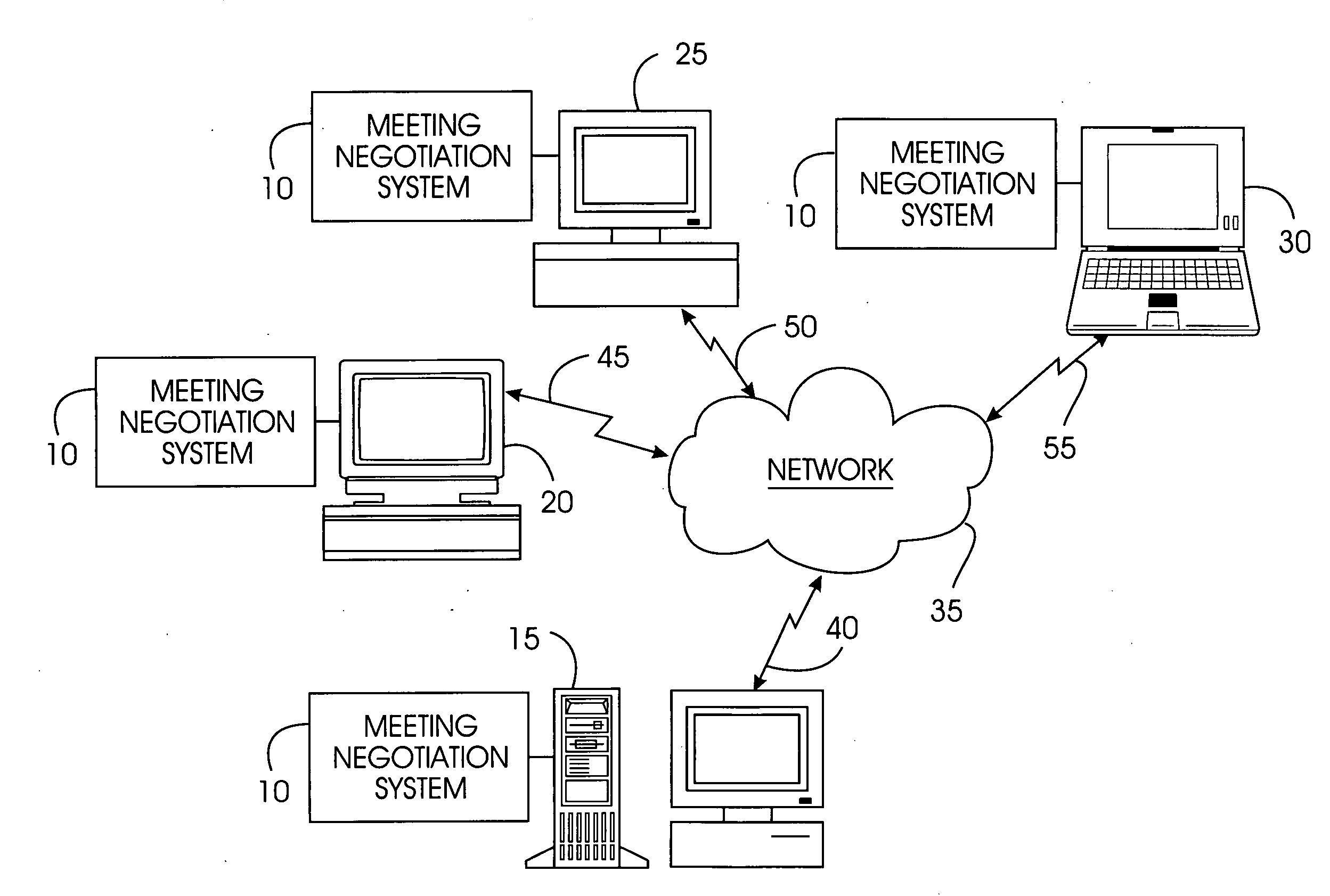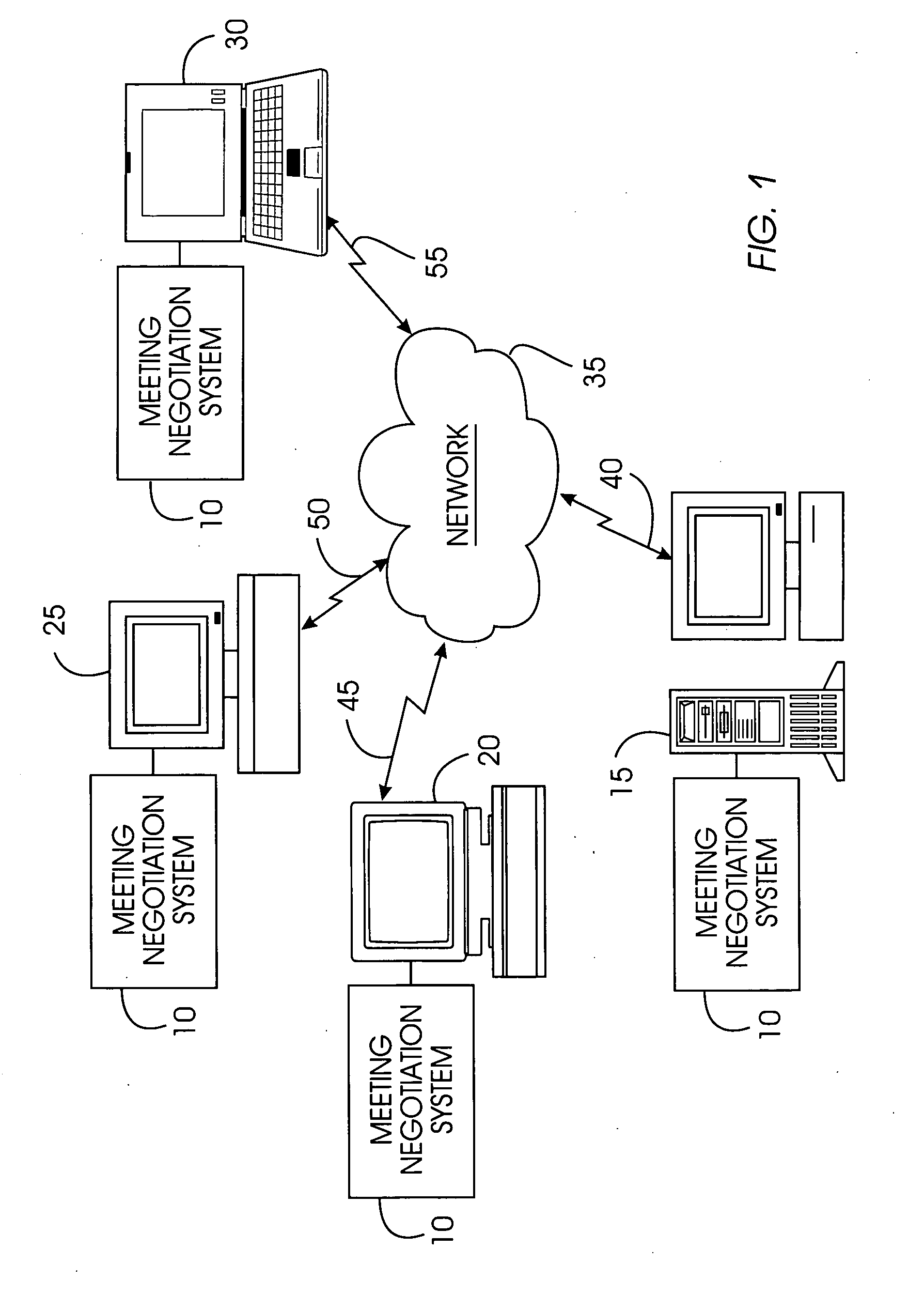System, method, and service for negotiating schedules while preserving privacy through a shared representation
a shared representation and schedule technology, applied in the field of electronic calendaring, can solve the problems of cumbersome and disruptive, electronic calendars are typically not accurate reflections of users' time, and many users do not maintain electronic calendars, so as to reduce the number of users, facilitate dialogue, and increase the user base
- Summary
- Abstract
- Description
- Claims
- Application Information
AI Technical Summary
Benefits of technology
Problems solved by technology
Method used
Image
Examples
Embodiment Construction
[0041] The following definitions and explanations provide background information pertaining to the technical field of the present invention, and are intended to facilitate the understanding of the present invention without limiting its scope:
[0042] API (application program interface): A specific method prescribed by a computer operating system or by another application program by which a programmer writing an application program can make requests of the operating system or another application.
[0043] EJB (enterprise java bean): A Java API developed by Sun Microsystems that defines a component architecture for multi-tier client / server systems. Types of EJBs comprise session beans to perform processing, entity beans to represent data such as a row or a table in a database, and message driven beans to process Java Messaging Service (JMS) messages.
[0044] IIOP (Internet inter-orb protocol): A protocol based on Common Object Request Broker Architecture (CORBA) that defines how distribut...
PUM
 Login to View More
Login to View More Abstract
Description
Claims
Application Information
 Login to View More
Login to View More - R&D
- Intellectual Property
- Life Sciences
- Materials
- Tech Scout
- Unparalleled Data Quality
- Higher Quality Content
- 60% Fewer Hallucinations
Browse by: Latest US Patents, China's latest patents, Technical Efficacy Thesaurus, Application Domain, Technology Topic, Popular Technical Reports.
© 2025 PatSnap. All rights reserved.Legal|Privacy policy|Modern Slavery Act Transparency Statement|Sitemap|About US| Contact US: help@patsnap.com



